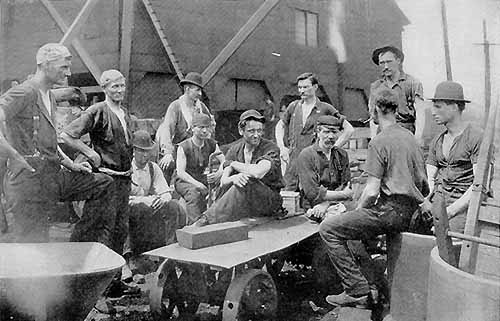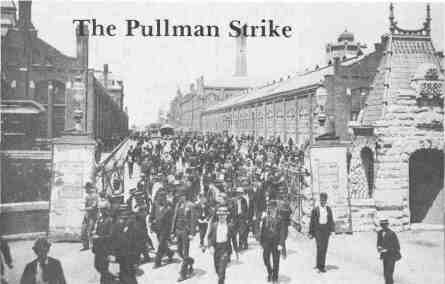
Notable Labor Strikes of the Gilded Age
Strikes have played a significant role in the economic, political, and social life of the United States throughout its history. From strikes by shoemakers, printers, bakers, and other artisans in the era of the Revolution through the bitter airline strikes two centuries later, workers repeatedly tried to defend or improve their living and working conditions by collectively refusing to work until specific demands were met.
Since the early 1880s, when reliable statistics were first compiled, American workers have struck with a frequency roughly equal to that of their peers in Europe. Strikes in the United States, however, have tended to last longer than elsewhere, with a mean duration between 1881 and 1974 of twenty days. Accordingly, the total number of workdays lost in strikes proportionate to the size of the work force has been higher in the United States than almost anywhere else in the world.
The United States also has had the bloodiest labor history of any industrial nation. The first strike fatalities were two New York tailors, killed in 1850 by police dispersing a crowd of strikers. Since then, according to one estimate, well over seven hundred people - mostly strikers - have died in strike-related violence, and the total may be much higher. Some died in famous incidents, such as the 1913 Ludlow Massacre, when National Guardsmen attacked a tent colony of striking Colorado miners, or the 1937 Memorial Day Massacre, when ten supporters of a steel strike were killed by Chicago police. Most, however, died in little-noted confrontations with company guards, private detectives, scabs, or police.Although wage disputes have been the single most common cause of strikes, workers have walked off their jobs for many reasons, including efforts to win union recognition, shorten the workday, gain or defend control over the work process, improve working conditions, and protest the disciplining of unionists. Strikes have been called to exclude nonwhites or women from jobs and, more rarely, to protest racial discrimination. Unlike elsewhere, political strikes over non-work-related issues have been uncommon.
Strikes have played a major role in both the rise and fall of unions (though many have occurred without union involvement). Often strikes have stimulated the formation of new unions or union federations. The first citywide labor federations, formed in the 1820s and 1830s, grew out of strikes by artisans seeking to shorten their workday. Over a century later, the Congress of Industrial Organizations (CIO) was indirectly an outgrowth of a wave of strikes by industrial workers. Conversely, failed strikes have destroyed many unions. The American Railway Union, for example, was unable to survive the defeat of its 1894 strike against the Pullman Car Company. More recently, the mass firing of striking air traffic controllers by the Reagan administration led to the demise of the Professional Air Traffic Controllers Organization.
IMMIGRATION FROM 1870 TO 1920:
---About 24 million immigrants. 60% from Southern and Eastern Europe, about 25% Northern Europe (Germany, Ireland, Scandinavia), 15% other (Asian Mexican, etc).Approximately 35,000 workers a year were killed annually in work-related accidents from 1880 to 1900. Injured workers totaled another 536,000.
Between 1905 and 1920, there were an average of 2000 fatal accidents in the coal mining industry every year.
The unemployment rate before World War I rarely fell below 8% for full-time jobs. Underemployed workers probably counted for about 25% of the work force. A minority of urban workers had full-time year-round work.
Before 1920 about one in every four non-farm children under fourteen worked full-time.
Before the 1930s less than half of Americans received more than a grade school education.
See also The Aftermath of the Great Strike


 Pullman
workers exit the factory gates after a day's work. Most employees walked
Pullman
workers exit the factory gates after a day's work. Most employees walked
the short distance to their nearby Pullman-owned homes and apartments.